
About UsThe Numismatic Bibliomania Society is a non-profit organization promoting numismatic literature. For more information please see our web site at coinbooks.org SubscriptionsThose wishing to become new E-Sylum subscribers (or wishing to Unsubscribe) can go to the following web page link MembershipThere is a membership application available on the web site Membership Application To join, print the application and return it with your check to the address printed on the application. Membership is only $15 to addresses in the U.S., $20 for First Class mail, and $25 elsewhere. For those without web access, write to: David M. Sundman, Secretary/TreasurerNumismatic Bibliomania
Society AsylumFor Asylum mailing address changes and other membership questions, contact David at this email address: dsundman@LittletonCoin.com SubmissionsTo submit items for publication in The E-Sylum, just Reply to this message, or write to the Editor at this address: whomren@coinlibrary.com
BUY THE BOOK BEFORE THE COINYou won't regret it! |
- WAYNE'S WORDS: THE E-SYLUM DECEMBER 19, 2010
- SKLOW MAIL BID SALE NO. 12: BOWERS RESEARCH LIBRARY PART FOUR
- KOLBE & FANNING NEW YORK SALE LIVE INTERNET BIDDING
- NEW BOOK: GUIDE BOOK OF FRANKLIN AND KENNEDY HALF DOLLARS
- NEW BOOKS IN THE MONETA SERIES: #115-#121
- NEW BOOK: ANCIENT BRITISH COINS
- BOOK REVIEW: AGRICULTURAL AND MECHANICAL SOCIETY MEDALS OF THE U.S.
- BOOK REVIEW: THE FROME HOARD
- ANS ACQUIRES DR. THOMAS P. HALL'S COLONIAL ENCYCLOPEDIA
- AL HOCH'S FIRST PUBLISHING VENTURE: MILLER ON CONNECTICUT
- MEDALLIC ART COMPANY ANNOUNCES NEW WEB SITE
- QUERY: THE EARLIEST BOUND NUMISMATIC BOOK
- QUERY: AUCTION PEDIGREES FOR 1834 COPPER PATTERN HALF EAGLES SOUGHT
- QUERY: A HOLED AND STAMPED LARGE CENT
- MYTHS ABOUT YAP STONE MONEY
- NUMBER NUTS: COLLECTING SPECIALLY NUMBERED BANKNOTES
- OSTHEIMER COLLECTION SO-CALLED DOLLARS OFFERED IN JANUARY 2011
- GOOGLE BOOKS TOOL TRACKS WORD USE OVER THE CENTURIES
- QUIZ QUESTION: BANKNOTES FEATURING PARENTS AND CHILD
- GREEN [SPACE] DUCK CORPORATION WAS ORIGINALLY GREENDUCK
- NOTES FROM E-SYLUM READERS: DECEMBER 19, 2010
- WAYNE'S NUMISMATIC DIARY: DECEMBER 19, 2010
- PUBLIC BEGINS REACTING TO NEW SHIELD CENT DESIGN
- NATIONAL PUBLIC RADIO ON THE UNION SHIELD CENT
- HISTORICAL SOCIETY CONSERVES FRACTIONAL CURRENCY SHIELD
- BERLIN AND VIENNA MUSEUMS FEATURE GOLD EXHIBITS
- DAILY MAIL REPORTS 2011 50 PENCE COIN FOUND IN CIRCULATION
- ELIZABETH CROSS MEDAL AWARDED
- FEATURED WEB SITE: THE TOKEN AND MEDAL SOCIETY
WAYNE'S WORDS: THE E-SYLUM DECEMBER 19, 2010

Among our new subscribers this week are Cuneyd Tolek, courtesy of Fred Schwan, and Peter Rozewski. Welcome aboard! We now have 1,392 email subscribers, plus 105 followers on Facebook, including Kevin Stroud, David Menchell and Guerdy Lissade.
This week we open with numismatic literature sale updates from David Sklow and George Kolbe, followed by three new book announcements and two great book reviews from Jeff Reichenberger and Dick Johnson. Next up is word from ANS Librarian Elizabeth Hahn about a wonderful new acquisition relating to U.S. colonial coins.
Other topics this week include Al Hoch's first numismatic publishing venture, the Medallic Art Company web site, pattern half eagles, Google Books, and the Union Shield cent reverse design. To learn more about the Alchemical Medallion, Dr. Thomas P. Hall's colonial encyclopedia, Yap Stone money myths, and the restoration of a Fractional Currency Shield, read on. Have a great week, everyone!
Wayne Homren
Numismatic Bibliomania Society
SKLOW MAIL BID SALE NO. 12: BOWERS RESEARCH LIBRARY PART FOUR
PART FOUR OF “THE MASTER OF WOLFEBORO”
Q. DAVID BOWERS RESEARCH LIBRARY
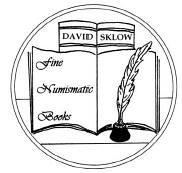 From the research & source library of Q. David Bowers comes seventy-five lots of historical works and a touch of numismatics.
From the research & source library of Q. David Bowers comes seventy-five lots of historical works and a touch of numismatics.
The sale also features classic selections from the library of numismatic publisher and literature dealer Myron Xenos, to include bound volumes of The Numismatist 1894-1936 and a long run of over sixty Chapman catalogs.
Over three thousand full color photographs of U. S. Large Cents 1793-1814 by William Noyes.
The very rare 1881 first edition of Frank Andrews work on U. S. Large Cents 1816-1857 serial number 22 of 40 published with only 6-8 known.
Libraries from the West Coast and the East Coast; featuring deluxe bound auction catalogs and special presentation editions.
Badges & Medals of the American Numismatic Association from the estate of Rollie Finner.
Bidders may enter bids by mail, telephone, email or fax. The sale closes at 8pm mountain time, February 12, 2011, however, any bids left on our answering machines or sent by email or fax on or before midnight on closing day will be accepted.
Catalog is now viewable on our website. Individuals on our mailing list will have their copy mailed after January 1st. Catalogs are available upon request at no charge.
P.O. BOX 6321
COLORADO SPRINGS, CO 80934
TEL: (719) 302-5686
FAX: (719) 302-4933
finenumismaticbooks@aol.com
www.finenumismaticbooks.com
KOLBE & FANNING NEW YORK SALE LIVE INTERNET BIDDING
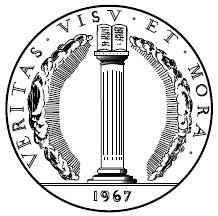 For those unable to personally attend the January 8, 2011 New York Sale Featuring Rare and Important Works on Numismatics, Kolbe & Fanning will provide, for the second year, an opportunity to bid live over the internet. Interested parties are invited to access the online catalogue via the following direct link:
For those unable to personally attend the January 8, 2011 New York Sale Featuring Rare and Important Works on Numismatics, Kolbe & Fanning will provide, for the second year, an opportunity to bid live over the internet. Interested parties are invited to access the online catalogue via the following direct link:
www.the-saleroom.com/Catalogues/SaleDetails.aspx?eventId=2805710
Over 100 lots are illustrated in color at the site and even those who are not interested in registering online may find it usefal to access the link. Many additional color illustrations not appearing in the regular catalogue have also been added to the K & F web site: www.numislit.com
NEW BOOK: GUIDE BOOK OF FRANKLIN AND KENNEDY HALF DOLLARS
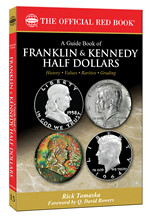 Whitman Publishing has released the 15th title in its Bowers Series of numismatic references: the Guide Book of Franklin and Kennedy Half Dollars, by Rick Tomaska. The 304-page softcover book is available online (including at WhitmanBooks.com) and from booksellers nationwide. It retails for $19.95. A special Limited Edition of 2,000 individually numbered and autographed hardcover copies is available directly from Tomaska's R & I Coins.
Whitman Publishing has released the 15th title in its Bowers Series of numismatic references: the Guide Book of Franklin and Kennedy Half Dollars, by Rick Tomaska. The 304-page softcover book is available online (including at WhitmanBooks.com) and from booksellers nationwide. It retails for $19.95. A special Limited Edition of 2,000 individually numbered and autographed hardcover copies is available directly from Tomaska's R & I Coins.
Rick Tomaska is well known as a coin dealer specializing in high-grade Proofs in particular. In the late 1980s and early 1990s he championed the recognition of cameo and deep cameo Proof designations on NGC and PCGS holders. Later he advocated for similar recognition of the Full Bell Lines (FBL) designation for Franklin half dollars. He has written for The Numismatist, Coin World, Numismatic News, and other trade and hobby publications.
Award-winning numismatist Q. David Bowers wrote the guide's foreword. “Between these two covers is just about everything you ever wanted to know about Franklin and Kennedy half dollars, and more than you ever imagined existed,” said Bowers.
Whitman publisher Dennis Tucker notes that Franklin and Kennedy half dollars are growing in popularity, judging by letters, emails, and phone calls the company receives from collectors. “Whether you have $50 a month to build your collection or $10,000, you'll find challenges and rewards in these series,” Tucker said.
The book includes technical information on how Proof coins and Special Mint Sets are produced; the preparation of dies and planchets, and their influence on the finished coin; press operation and die maintenance; and potential imperfections during and after minting.
Collector topics include factors that affect Proof grades; the grader's tools; how to determine cameo contrast; and market realities like the significance of depleted rare-coin reserves, and certified coins cracked out of their slabs and resubmitted for attempted upgrades. Tomaska shares decades of insight on the Cameo, Deep Cameo, and Ultra Cameo designations.
The main catalog of the book is a coin-by-coin study by date, mintmark, and die variety. Franklin half dollars are analyzed in 115 pages, and the Kennedy series in 123 pages. These illustrated sections cover mintages, certified populations, values in multiple grades, variety characteristics, tips for smart buying, strike characteristics, and other aspects of collecting.
Two appendices round out the book. Appendix A is a gallery of beautifully toned coins of each series, with 70 remarkable full-color, enlarged photographs. Appendix B is a compilation of mintages and valuations, expanding on the data presented in the main catalog.
A Guide Book of Franklin and Kennedy Half Dollars
Rick Tomaska; foreword by Q. David Bowers
ISBN 0794832431
304 pages, full color, softcover
Retail $19.95
NEW BOOKS IN THE MONETA SERIES: #115-#121
I am pleased to inform that a group of new 2011 volumes are now in press and will be available in January-February. Moneta (www.moneta.be)
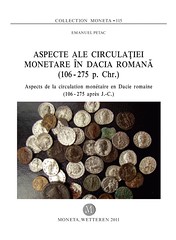

115, E. Petac, Aspecte ale circula iei monetare în Dacia Roman (106-275 p., chr.); Aspects de la circulation monétaire en Dacie romaine (106 - 275 après J.-C.), 2011, 392 p. ISBN 978-90-77297-83-4. € 80
116, J.-L. Dengis, Trouvailles et trésors monétaires en Belgique, VII. Province de Luxembourg, Les monnaies romaines, 2011, 198 p., ISBN 978-90-77297-84-1. € 55
117, Documents and Studies on 19th c. Monetary History, International Monetary Conferences, Republication of Report of the International Conference on Weights, Measures, and Coins and Report of the Master of the Mint and Mr. Rivers Wilson on the International Monetary Conference held in Paris, June 1867 (London, 1868), G. Depeyrot, ed., 2011, 84 p.. € 40
118, Documents and Studies on 19th c. Monetary History, International Monetary Conferences, Republication of Report of the Royal Commission on International Coinage together with the Minutes of Evidence and Appendix (London, 1868), G. Depeyrot, ed., 2011, 382 p.. € 75
119, Documents and Studies on 19th c. Monetary History, England, Republication of Report from the Select Committee on Depreciation of Silver together with the Proceedings of the Committee, Minutes of Evidence, and Appendix (London, 1876) G. Depeyrot, ed., 2011, 394 p.. € 75
120, J.-L. Dengis, Trouvailles et trésors monétaires en Belgique, VIII. Province de Liège, Les monnaies romaines, 2011, 172 p.. € 50
121, Documents and Studies on 19th c. Monetary History, Japan, Republication of The Currency of Japan, A Reprint of Articles, Letters, and Official Reports, Published at Intervals in the Foreign Newspapers of Japan, together with Translations from Japanese Journals, Relating to the Currency, Paper and Metallic, of the Empire of Japan (Yokohama, 1882), M. Kovalchuk, G. Depeyrot, ed., 2011, 204 p.. € 55
Georges Depeyrot,
Archeologies d'Orient et d'Occident, Ecole Normale Superieure, Paris (CNRS/ENS/UMR 8546)
NEW BOOK: ANCIENT BRITISH COINS
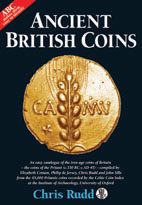 Never before have so many ancient British coins been so easy to identify, so easy to study, so easy to enjoy. ABC catalogues 999 iron age coins, including 418 new types not shown by Van Arsdell in 1989. ABC describes and dates them, gives up to six references for each, estimates their rarity and shows every coin twice actual size, so that its distinctive differences can be seen at a glance. ABC took ten years to produce, has 256 fact-packed pages and contains 4000 superb coin photos, plus 500 other illustrations, diagrams, tables and maps.
Never before have so many ancient British coins been so easy to identify, so easy to study, so easy to enjoy. ABC catalogues 999 iron age coins, including 418 new types not shown by Van Arsdell in 1989. ABC describes and dates them, gives up to six references for each, estimates their rarity and shows every coin twice actual size, so that its distinctive differences can be seen at a glance. ABC took ten years to produce, has 256 fact-packed pages and contains 4000 superb coin photos, plus 500 other illustrations, diagrams, tables and maps.
ABC is a picture book, not a lecture book. “ABC is a remarkable achievement” says Prof. Miranda Aldhouse-Green. “It manages to combine scholarship and accessible information in a volume whose every page is interesting and whose writing style makes it fun to use.” ABC is a large hardback book (30 x 20 cm), light in style, heavy in weight (1.5 kgs) - “an indispensable aid to anyone wanting to identify British iron age coins” says Prof. Colin Haselgrove - worth every penny of its £75 plus postage. Buy ABC direct from Chris Rudd. For more information visit: www.celticcoins.com .
In ABC you'll find the coins of men who made history. You'll meet Commios who helped Caesar raid Britain in 55 and 54 BC; Dubnovellaunos ‘world ruler' who paid homage to Augustus; Amminus who squealed to Caligula; Verica who gave Claudius an excuse to invade Britain; Prasutagus, Boudica's rich husband, who ruled the Iceni on behalf of Nero; and Cunobelinus who became the most powerful tribal ruler in western Europe, immortalised by Suetonius as ‘king of the Britons' and by Shakespeare as Cymbeline. You'll also meet his son Caratacus ‘the beloved' who fought the Romans for eight years until he was betrayed by Cartimandua ‘strong pony', queen of the Brigantes.
In ABC you'll discover elusive rulers such as Sam of Kent and Touto too, Ex of Hants, Crab of Wight, Scavo of Norfolk, Cat of Lincs and Cat of Herts, Inamn of Glos., and Trocc of Essex – all unknown to history and most historians, some unrecorded by previous cataloguers.
In ABC you'll see crabs, rats and owls. You'll see sea-horses, human horses and horses that breathe fire. You'll see bounding hounds, butting bulls and rutting stags. You'll see cocks on heads, ducks on helmets and marsh-birds perched on slavering wolves. You'll see dragons, griffins, sphinxes, two-headed snakes and ram-headed serpents. You'll see gods and goddesses galore, druid priests, hidden faces, magic symbols and phallic symbols. You'll see Gold Tit, Willett's Nipple and Thatcher's Sister. Look closer and you may see signs of wine drinking, slave trading, ritual killing and head hunting.
ABC is for metal detectorists, collectors, students, dealers and anyone with an interest in the art, archaeology, mythology or history of late iron age Britain and its charismatic coins. Above all, ABC has been designed to be convenient to consult – convenient for everyone, not just those with Dr. in front of their name. ABC is a picture book, not a lecture book.
THE BOOK BAZARRE
“The Secret History of the First U.S. Mint!”BOOK REVIEW: AGRICULTURAL AND MECHANICAL SOCIETY MEDALS OF THE U.S.
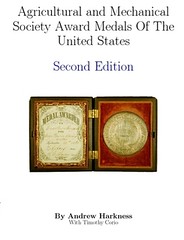 My order from Lulu including your book Agricultural and Mechanical Society Award Medals of the United States arrived this week. I am impressed with the collection of the excellent specimens you have gathered in your outstanding collection. The color photographs are magnificent. But I was disappointed in the text.
My order from Lulu including your book Agricultural and Mechanical Society Award Medals of the United States arrived this week. I am impressed with the collection of the excellent specimens you have gathered in your outstanding collection. The color photographs are magnificent. But I was disappointed in the text.
Essentially what you have placed on Lulu is a check list illustrated with those exceptional color illustrations. I was also impressed with your numbering system -- technically called a geographic-numeric open number system -- for the ease in which to add more specimens in the future while retaining the existing numbers. You are also to be commended for not waiting to publish before you collect every specimen possible in your chosen medallic topic.
But you have a lot of work to do. As a collector it is your duty to acquire as many types as possible within that topic. As an author it is your duty to write a text that would answer as many legitimate questions an intelligent reader -- and potential collector of that series -- is likely to ask. Thus in examining your book, I cry out for more information on these medals that you have chosen as your specialized medal topic.
I would have liked for you to have furnished the following: (1) a description of each medal, obverse and reverse, (2) background on that medal award program, (3) the first and last year such an award medal was issued by the architectural or mechanical society, (4) the artist, the engraver who cut the dies, from which these medals were struck [you have mentioned the artist if it appears on the medal itself -- what about all others?], (5) the "collector lore" additional data on the medals, the arcane information that adds such a delight for collectors to learn, and finally (6) background information on the issuing organizations themselves.
Andy, you have performed your collecting function extremely well, but you have failed your readers in providing all that additional information. I know the job is not easy, but doesn't your collection and now your specialize knowledge of this field compel you to compile that data?
Here are some suggestions that might aid in this endeavor.
State Libraries. Start by contacting the State Librarian in each state where these medals were issued. State libraries should have extensive resources on their state fairs, expositions, and organizations -- and if you are lucky -- some original records of those organizations and functions. It would be ideal to uncover the invoice, or order to the artist to engrave their dies, and the number and cost of the medals the artist or medal company supplied each year. Otherwise you might find some news article on the issuance of the medal which just may have identified the artist or where the medals were obtained.
Digging in the records. Don't expect library officials to do your work for you. If they have a lot of material you will have to go to their institution and plow through the records yourself. They will guide you and and show you as many published and unpublished works they think in their professional view may have the information you are seeking. The deeper you dig the more apt you are to find the treasure. Keep digging.
Ask for help. Ask people who might have the data you are seeking, this obviously would be numismatic people -- collectors, dealers, curators -- also historians within each state, possible other collectors of state fairs and such, and ... use your imagination in who might have specialize data. The information will come in bits and drabs at first, and occasionally big chunks of data. But gather all that is relevant.
Hire paid researchers. If you feel you cannot extend yourself across 50 states you might consider hiring paid researchers. Here again the State Librarians might have suggestions. The researchers themselves will also have suggested sources.
Use the Internet effectively. You can gather some data off of the Internet, but not as much as you require, and it must be verified since anyone can put anything on the net. There are also blogs where you can ask questions, which might elicit an answer from some kind person reading your inquiry. People like to share their knowledge.
Andy, you have done a fabulous job up to now. Please give us medal collectors the book on your medal specialty we would all like to have. We know it will be a labor of love --you won't make a lot of money from the book -- but we would like to share that love with you.
The second edition of Andrew Harkness book, "Agricultural and Mechanical Society Award Medals of the United States" is available from Lulu.com
To read the earlier E-Sylum article, see: NEW EDITION: AGRICULTURAL AND MECHANICAL SOCIETY MEDALS OF THE U.S. (www.coinbooks.org/esylum_v13n48a07.html)
BOOK REVIEW: THE FROME HOARD
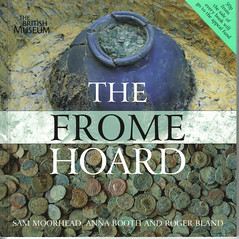
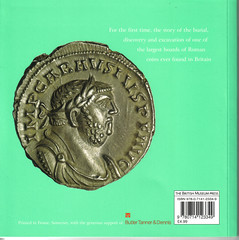
The Frome Hoard is the name given to a hoard of third century ancient coins found in the town of Frome, Somerset County, Great Britain. It is also the title of the book published by the British Museum that chronicles the important find.
The book breaks the story into nine chapters divided amongst 48 pages. There are two pages of acknowledgements, which emphasize the outstanding cooperation between many individuals and organizations in the discovery, excavation, and conservation of the hoard. Indeed, the often disputed claims between the finder, land owner, and government authorities that are regularly reported with such discoveries, is simply not a factor in the story of the Frome Hoard.
The first two chapters follow the discovery, excavation, conservation, and study of the coins. Discovered treasure stories are always compelling and this one is no exception. On April 9, 2010, Dave Crisp, a seasoned metal detectorist, was searching a grown over pasture that was at one time a ploughed field, with permission of the landowners. He located a scattering of fourth century Roman Siliquae. Two days later he returned to the site, and working into the field approximately 100 meters from the first find, he heard a signal. “Upon digging a small hole to investigate further he realized that he had hit the top of a pottery vessel containing some bronze coins. Recognizing that he might be dealing with a hoard, he dug no further, filled the hole back in and decided to report his find immediately so that it could be excavated by archaeologists.”
The excavation procedure is fascinating including the removal of the topsoil, digging around natural brown soil of the original pit, the revealed size and shape of the gray clay pot and the finding of its lid. The onion-shaped pot was cracked but complete, and measured approximately 24 inches in height and 18 inches in diameter, and completely filled with coins. The exterior of the pot had been carefully packed with some kind of preserving plant material. The coins were removed in layers when it was determined that the pot was too fragile to move en bloc. Of course all of these steps and more are well photographed and supplemented with illustrations of how the pot rested underground.
The middle chapters cover the circumstances of the burial, the cleaning, sorting and attribution of the coins. Among the 52,503 coins there are 10 mints, 26 rulers, and 40 years (AD 253 – 293) represented, as well as the Central, Gallic, and British Roman empires. The majority of the coins are base silver radiates containing less than 5 % silver. It's interesting to note the distribution of coins by layer in conjunction with the rulers and years represented. Coins of one ruler, the British Emperor Carausius, were found in large concentration in the 16th layer, just over halfway down the pot. The coins of Carausius are previously known to be scarce and in fact, five rare silver denarii were found among nearly 800 radiates.
The final chapters cover the Emperor Carausius and his significance to Britain, other British coin hoards and what comes next for the Frome Hoard.
I loved the book - it's well written, and beautifully illustrated with maps, diagrams, or photos on every page. A light read, but fascinating in all the aspects of what happens when an important hoard is discovered. I enjoyed learning little tidbits such as the fact that, while the Frome Hoard is the largest ever found in a single container, hoards of radiate coins of the period are very common in Britain, nearly 600 such hoards are known, which is the greatest concentration of finds in the Roman Empire. Also, the authors contend that the hoard was probably not buried with the intent to later recover the treasure, but rather as a sacrifice to the gods for agricultural prosperity.
The hoard was declared Treasure under the terms of the 1996 Treasure Act and property of the Crown. However, they are offered to museums to acquire. The Somerset County Heritage Service is in the process of acquiring the find. (Part of the proceeds of the book go to the funding.) Then valuation of the coins will be established and proper compensation distributed to Dave Crisp and the landowners. Once the hoard has been entirely cleaned (conservators estimate another year), studied, and attributed, it will be on display at British museums. There is no indication or speculation in the book that any of the coins, no matter how common, will enter the marketplace.
The book itself is square and measures 7.5 x 7.5 inches, perfect bound with a heavy gloss card cover. Inside pages are matte finish making for outstanding photographic quality. The last pages feature a timeline and bibliography. Written by Sam Moorhead, National Finds Advisor of the British Museum, Anna Booth, Somerset County Finds Liaison Officer, and Roger Bland, Head of the Department of Treasure at the British Museum. The book costs a mere $7.85 and that includes shipping!! It can be ordered directly from the British Museum at britishmuseum.org .
ANS ACQUIRES DR. THOMAS P. HALL'S COLONIAL ENCYCLOPEDIA
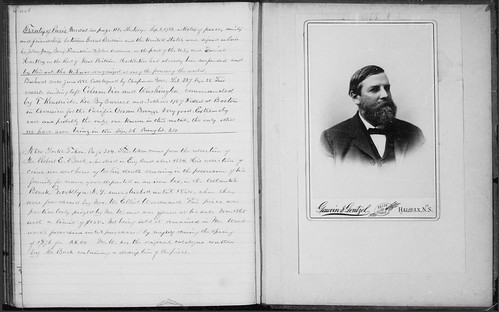
Elizabeth Hahn, librarian of the American Numismatic Society writes:
The following bit of news might be of interest to E-Sylum readers. In short, the ANS Library has recently acquired a hard copy of the Thomas P. Hall Colonial notebook. A microfilm of the original notebook was in the ANS Library and has recently been reformatted as a hard-copy book, making it much easier to examine in detail.
Roger S. Siboni, who gifted this hard copy to the library, was the driving force of this project. I would like to share here his description of the project as well as two images from the end of the notebook.
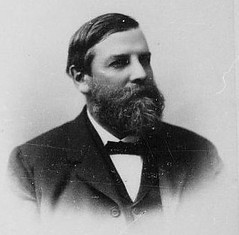 You will see that the first has an image of a gentleman, and I'd be curious to know if any E-Sylum readers could identify him? (Could he be Hall?). As well, speaking of preservation issues, I'd like to note that the issue of microfilm and preservation, ever present in the ANS library, will be the subject of my forthcoming ANS magazine library column, issue 2011 no. 1. Look for it in the New Year!
You will see that the first has an image of a gentleman, and I'd be curious to know if any E-Sylum readers could identify him? (Could he be Hall?). As well, speaking of preservation issues, I'd like to note that the issue of microfilm and preservation, ever present in the ANS library, will be the subject of my forthcoming ANS magazine library column, issue 2011 no. 1. Look for it in the New Year!
Thanks! And Happy Holidays to you and all E-Sylum readers!
Roger S. Siboni
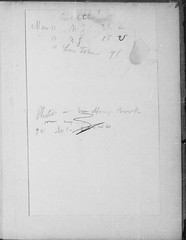 In writing up the Collectors and their Collections chapter for the New Jersey Copper Book, I became very intrigued with some of the early collectors of Colonial Coins. While most collectors know the contributions of Crosby, Maris, Ryder and Miller, the names Stickney, Canfield, and W.W. Hays are less well known. And perhaps the least well known relative to his many contributions to the field is Dr. Thomas P.
Hall.
In writing up the Collectors and their Collections chapter for the New Jersey Copper Book, I became very intrigued with some of the early collectors of Colonial Coins. While most collectors know the contributions of Crosby, Maris, Ryder and Miller, the names Stickney, Canfield, and W.W. Hays are less well known. And perhaps the least well known relative to his many contributions to the field is Dr. Thomas P.
Hall.
Dr. Hall, first and foremost was a student of Connecticut Coppers. And while not trying to take anything away from Miller, it is fairly well known that Miller could not have accomplished his work without the substantial foundational work of Hall aided by Hays. Modern students of Connecticut Coppers mainly know this from the Brand Archives contained in the ANS (Brand purchased Hall's collection and notes intact) and Hall's Connecticut Notebook uncovered at the Connecticut State Library along with the famous Mitchelson collection.
But what many don't know is how extensive Hall's knowledge was of other areas of Colonials. Indeed, it was Hall who discovered more post-Maris varieties than any other individual. He, Maris and Canfield collaborated extensively with one another on New Jersey Coppers. In researching the modern New Jersey Book both Buell Ish and Jack Howes came across some notes related to Hall's notebook in the Ned Barnsley notebook while I was studying Hall. The citation they were looking for was on page 410 of the Hall Notebook. Unfortunately, when I looked at Hall's Connecticut notebook, I discovered it only had approximately 200 pages.
This was quite a conundrum. So I decided to talk it through with Robert Martin, one of the few experts on all things Hall. After some conversation and research back and forth, Robert came up with a description of a small exhibit at the 1990 EAC Convention in St. Louis on literature put together by Eric Newman. In that exhibit, there was a Hall Encyclopedia that Newman apparently acquired from the Brand Estate via B.G. Johnson, via Armin Brand. The small write-up indicated a copy was in the ANS. I quickly called Elizabeth Hahn at the ANS to scour the library for this previously unknown book to most modern Colonial collectors.
While no physical book could be found, there was an obscure reference to a Hall related document on microfilm from the 1940s from an anonymous source. Amazingly, Elizabeth was able to unearth the disintegrating microfilm and we were off to the races. Microfilm and readers are rapidly becoming as scarce as computer punch cards. But we were able to find one of a handful of people specializing in digitizing microfilm.
After some back and forth we received the Hall Colonial Encyclopedia digitized on a DVD. Because of legibility issues, it was then sent off to a graphic designer to sharpen, contrast and enlarge the pages to be readable. Then off to the bookbinder so that the copy of Hall's Colonial Encyclopedia can now safely and legibly rest in the ANS Library. Page 410 and it's previously lost content will be in our book!
By the way, the discovery of the Hall Encyclopedia did encourage Elizabeth to take on the hunt for any other microfilmed jewels in the ANS Library along with her many other duties.
AL HOCH'S FIRST PUBLISHING VENTURE: MILLER ON CONNECTICUT
George Fuld writes:
I drafted a story about Al Hoch for the Medal Collectors of America. It did not cover The Colonial Newsletter, but his first venture in "publishing". Perhaps this is of interest to E-Sylum readers.
Back in about 1957, there was a small group of budding numismatists from the Boston area, whose major interest was U. S. colonial coins. Robert (Bob) Vlack was interested in all colonial issues, especially Washington colonials. Kenny Rendell was involved with early U. S. coinage and issued price lists on a major Hard Times collection and some important large cents. Phil Grecco concentrated on Massachusetts copper coinage. George Fuld was deep into Washingtonia and Civil War cents. Al Hoch was involved with colonials. And especially Connecticut coinage.
Now some fifty years latter, all but one of this group of twenty years oldsters are still deeply involved with numismatics. Bob Vlack has authored several books, on colonial coinage. Kenny Rendell is a major player in the field of letters and autographs. George Fuld has authored aspects of Washingtonia and Civil War cents. Al Hoch, who passed away recently began publishing books on numismatics with his company called Quarterman Publications.
Al Hoch, who was involved in the 1957 period with Bob Vlack and George Fuld with a mutual interest in colonial coinage references. One of them (I can't remember which one) obtained a copy of Miller on Connecticut coins from Walter Breen who had heavily annotated a thorough update of this 1920 vintage publication. The three of us decided to produce an updated reprint of Miller's book in an edition of about ten copies.
A fresh copy of Miller was obtained, and Al had photo copies made. His wife made the hand written updating by hand for the nominal sum of five dollars per copy. Al then had them bound in red cloth binding. Frankly, as the years have passed, I cannot remember what we sold them for and exactly how many copies were reprinted. My remembrance is that they sold for twenty-five dollars per copy.
This initial publishing venture inspired Al Hoch to found Quarterman Publications. One promise he made to George Fuld was the early issuance of the Token Collectors Pages volume in 1972 under the title “Gleanings from the Numismatist” which included a reprint of Dr. B. P. Wright's “American Business Tokens” and D. C. Wismer's “Obsolete Bank Notes of New England”.
Hoch's publication company produced several dozen titles, many of which sell today for multiples of the issuing price. I don't believe that Al made any fortune from these books, but he did it for the love of fellow collectors. Sadly he was quite ill from the past number of years, but his contribution to fellow collectors will live on.
To read the earlier E-Sylum article, see: MORE ON NUMISMATIC PUBLISHER AL HOCH AND THE COLONIAL NEWSLETTER (www.coinbooks.org/esylum_v13n50a07.html)
THE BOOK BAZARRE
MEDALLIC ART COMPANY ANNOUNCES NEW WEB SITE

The world-famous Medallic Art Company announced today a new web site, www.medallic.com , designed to better display its 100+ years of minting excellence and to provide ready access for customers and art historians to numerous product categories, galleries, and historic slide presentations and custom minting information.
The new www.medallic.com is intuitive, which lets a site visitor navigate with ease, letting visitors examine Medallic Art Company's custom medals, institutional chains and maces, stock and collectible medals, specialty items, lapel pins, and spinning medals and plaques. The ten new galleries feature outstanding creations of renowned sculptors such as James Earle Fraser (the Buffalo Nickel), Victor David Brenner (the Lincoln cent), and Augustus Saint-Gaudens (the ‘double eagle” coin). Since its creation, great artists have always been affiliated with Medallic Art Company.
The new website also provides a fascinating look at the entire minting process from concept to finished medallion, underscoring the complexity and artistry demanded of the sculptors, artists, die-makers, and production specialists in the creation of a fine work of art. Highlighted for visitors is the complete film, “The Medal Maker.” First shown to the Society of Medalists in 1929, it features multi-award winning coin and medal designer, sculptor Laura Gardin Fraser in her famous New York Studio in 1929 creating the models for the Special Medal of Honor for the National Sculpture Society, America's highest sculptural award. Every step of creation and production is shown, including sketching, preparing background plate, transferring the drawing and applying clay pellets to the model, foundry casting of the pattern, die making and striking the medal at Medallic Art Company. This exceptional movie is narrated by Elizabeth Jones, sculptor, and former United States Mint Chief Engraver, from her studio in Philadelphia.
About Medallic Art Company
Medallic Art Company was formed in 1903 by Henry Weil, a highly respected French sculptor living in New York City. Through the years, the company has reproduced bas relief work of some of the most famous 20th century American sculptors, as well as many of the important medals and awards in the United States, including the Pulitzer Prize, Congressional Medal of Honor, National Medal of Science, President's Medal for Freedom, the Newbery and Caldecott Medals, and the inaugural medals for 11 United States Presidents.
Medallic Art grew in size and prestige in New York before moving to Danbury, CT in 1972. It relocated to Sioux Falls, SD in 1991 and to Dayton, NV in 1997. In 2009 Medallic Art Company came under the stewardship of Northwest Territorial Mint, which moved its minting operations to the Medallic facility in Dayton, NV.
About Northwest Territorial Mint
Northwest Territorial Mint was founded in 1984 and has produced and minted coins, commemorative medallions, knives and other products for corporate, governmental, military and private entities around the world. Its designs have commemorated events, honored champions and saluted achievements large and small, and its medallions have been bestowed as merit awards, retirement gifts and traded as souvenirs and collectors' items. The retail showroom is located in Federal Way, Washington, where Northwest Territorial Mint also conducts its precious metals bullion business, being the largest independent mint in the United States.
To read the complete article, see: www.medallic.com
QUERY: THE EARLIEST BOUND NUMISMATIC BOOK
Dennis Tucker of Whitman Publishing writes:
I've heard it said (by J.T. Stanton) that The Cherrypickers' Guide, second edition, 1991, might have been the very first numismatic book to be published in spiral binding. Can an E-Sylum reader think of an earlier numismatic book issued in that format?
QUERY: AUCTION PEDIGREES FOR 1834 COPPER PATTERN HALF EAGLES SOUGHT
I am writing an article for the John Reich Journal and can use some help from our subscribers on Prices Realized Lists & buyer's names, if known. The article is on the 1834 copper pattern half eagles, AW-40 / J-51 & 51a. See citations below:
- E. Cogan 10/16/1865:527 “1834 $5 Gold Piece in Copper, size 1” (need PRL, buyer?)
- W.E. Woodward - Mickley 10/28/1867 (see above) (need buyer and PRL - can't find my copy)
- Leonard Bird 11/17/1869:271 “1834, Five Dollar Gold Piece, copper, fair.” It sold for $0.30 (does a copy exist with buyers names)
- E.F. Mason – Wm. Fewsmith 10/4/1870:1149 (need buyer and PRL)
- W.E. Woodward -12/16/1879:1852 “1834 Half Eagle ; struck in copper.” (need buyer and PRL)
- W.E. Woodward - Wm. J. Jenks 9/1/1880 – see above (need buyer's names)
- New York Coin & Stamp Co. – Parmalee 6/25/1890 – see above
- Charles Fisher 4/1/1933:475 “Half Eagle in Copper, A & W. No.40 From regular dies second type. Without Motto. Excessively Rare. Only 4 or 5 issued. Fine.” (need PRL, buyer?)
- Charles Fisher 3/14/1936:786 “1834 Pattern from regular dies, no Motto, similar to A & W #40 but has reeded edge. Fine.” (need PRL, buyer?)
QUERY: A HOLED AND STAMPED LARGE CENT
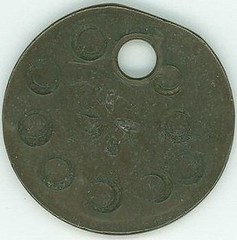
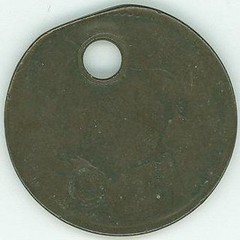
Howard A. Daniel III writes:
I cannot remember where I acquired this U.S. Large Cent but the countermarks and hole just looked too different to pass up. I am not that knowledgeable about U.S. coins but it appears to be a Braided Hair variety dated between 1840 and1857. Does anyone know if there is a recognizable reason for the countermarks? I will have the coin with me in Tampa at the next FUN Show if anyone wants to look at it.
MYTHS ABOUT YAP STONE MONEY
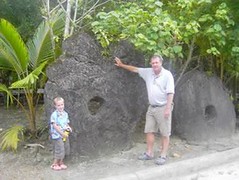 Thank you for the fascinating article in The E-Sylum Volume 13, Number 50, December 12, 2010 on the stone money of Yap.
Thank you for the fascinating article in The E-Sylum Volume 13, Number 50, December 12, 2010 on the stone money of Yap.
In July 2008 my family and I spent ten days on Yap expressly to learn more about this fabulous money which I had first seen in a photograph in a coin book at my local library when I was a boy in the 1960's.
Unfortunately the article perpetrates many myths about Yap's traditional money, including:
1) Sailing to Pulau on ‘small bamboo boats'. In fact I visited a boat on Yap which was near completion and which would shortly sail to Pulau under the direction of traditional navigators. The boat was made of timber, rather than bamboo. (However the Yapese use rafts constructed of bamboo for local transportation only.)
2) Whilst it is true that the ‘coins' are made of limestone, it needs to be stated that the stone is a crystalline form of limestone (aragonite CaCO3). At night my torch shone through the stone money so it is better described as ‘crystal' money. In the tropics the ‘coins' quickly become ‘gardens' being covered in moss, mould and ferns and their translucent properties are covered over (which does not affect their value) - This is however corrected in the audio interview linked at the website.
3) The myth that it was mostly used for non-commercial transactions. In fact Willard DeMille Price who spent some time on Yap in 1936 took a photograph of a slave bearing a coin to market to purchase consumables for the queen of Yap.
4) Failure to mention that there are other forms of money on the islands and the red shell bead necklace money is more valuable than ‘stone' money.
Other myths include the ‘antiquity' of stone money (early European visitors failed to make mention of its' existence), the influence of Europeans and in particular Captain David Dean O'Keefe who was shipwrecked on Yap in 1871 and subsequently provided sailing ships and metal tools to greatly expand the money supply, and that Yap is in fact not the indigenous name for the island (When the Spanish first arrived they came across a Yapese in a boat and apparently cried out in Spanish ‘What's this place called?'. Of course they were misunderstood but the Yapese thought they were asking ‘what's in your hand?' so he called back ‘yap', ‘a paddle'! The correct name is ‘Wa'ab' which means ‘land'.)
A paper I wrote on the money of Yap ‘A Yap about Money: Journey to the Forbidden Island of Stone Coins' can be found at www.speedy.co.nz/TraditionalMoney along with some photographs of stone money and stone money ‘banks', a sketch of the largest ‘coin' in the world (photography is forbidden) and an article on the origins and epistemology of traditional money.
I would encourage the numismatically curious to visit Yap. It is safe, clean and comfortable. The snorkelling is fantastic. You will be treated with the greatest respect by the Yapese. However, please in turn, respect the local culture which is very traditional and conservative.
To read the earlier E-Sylum article, see: YAP: THE ISLAND OF STONE MONEY (www.coinbooks.org/esylum_v13n50a21.html)
JANUARY 8, 2011 NEW YORK AUCTION SALE HIGHLIGHTS
The Incredible Dr. Jeff Hosford Collection of
the Works of Sylvester S. Crosby
Featuring Seven Outstanding Original Editions of The Early Coins of America, Including The author's Own Set in Original Wrappers; Crosby's “Family” Deluxe Nova Constellation Copy; John Robinson's Remarkable Subscription Copy with All Wrappers and Publication Ephemera; The Garrett Family's Annotated 1878 Crosby, and other Examples in Remarkable Condition
141 W JOHNSTOWN ROAD, GAHANNA OH 43230-2700
(614) 414-0855 • df@numislit.com • GFK@numislit.com
NUMBER NUTS: COLLECTING SPECIALLY NUMBERED BANKNOTES
Fred Schwan writes:
You probably know that there are some real number nuts in the Military Payment Certificate (MPC) collecting community. One popular (crazy?) approach is to collect MPCs only one position on a sheet. The smallest sheet had 50 positions so you can imagine how much harder it is to find pieces from the desired position rather than just to find the item by type.
Off the top of my head, collectors are building sets from the following positions: 1, 2, 3, 4, 7, 8, 11, 13, 22, 23, and 39. I probably forgot some. I think that Joe Boling needs only two pieces to complete his 90 piece collection of positions eight. He has a cute story of how he got started on this task. Perhaps he will tell it here.
A really interesting variation is to collect the notes from the position that corresponds to the note's denomination (there are at least two of those sets in progress).
The ultimate collection (so far) along these lines is Larry Smulczenski's. His Number is 39. Of course he collects MPC from that position, but he collects other things with 39. He loves serial number 39. They are hard to find on MPC, so he finds others. If he cannot find serial number 39, well, 3900, 39000, 3939, 393939, 390039 and any other variation will do. When the first class postal rate was 39 cents, he collected all of those stamps. Can anyone figure out why he collects this particular number?
OSTHEIMER COLLECTION SO-CALLED DOLLARS OFFERED IN JANUARY 2011
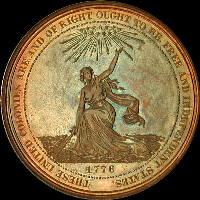
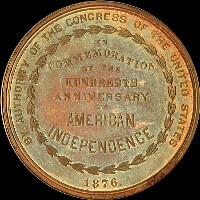
The second of three planned Sealed Bid Sales of So-Called Dollars from the Ostheimer Collection will be held in January 2011 at the FUN Convention in Tampa, Florida. Fifty select rarities from the Ostheimer Collection are to be offered by So-Called Dollar specialist Jeff Shevlin. The Ostheimer So-Called Dollar Collection has been off the market for over 45 years. Twenty-five additional rarities will be offered from the Jeff Shevlin Collection.
The first sealed bid sale was held last summer at the Boston ANA Convention. Many extremely rare specimens were offered in this sale, and many record prices were set. [For background on the Ostheimers and this collection see E-Sylum Volume 13, Number 31, August 1, 2010.] Shevlin's website includes an archive of Lots from the first sealed bid sale at the Boston ANA complete with photos, Lot descriptions and prices realized.
E-Sylum readers may be recall a two part article published in 1980 in The Numismatist by Thomas K. DeLorey, "Thomas L. Elder, A Catalogue of His Tokens and Medals. The sealed bid auction in Tampa will include many of these very scarce medals struck by Thomas Elder in the early 1900s.
Rarities being offered in the second sale also include an 1826 silver U.S. Semi-Centennial medal, a complete run of rare 1909 Hudson Fulton Celebration Elder Medals and extensive groupings of Veteran Corps of Artillery and Elder Taft & Wilson "gold Basis" dollars of 1903 (many with only 5-10 struck). All are graded by NGC and most are in the MS-65 to MS-67 grade range.
A number of the examples being offered in January are plate coins in the first and second editions of the Hibler & Kappen book So-Called Dollars. Lot 79 is a beautifully toned Official U.S. Centennial Medal – 1876 (H&K 20) graded NGC MS65PL and is the plate coin in the second edition of the H&K book as well as the plate coin in the Jaeger & Bowers book 100 Greatest Medals and Tokens. As in the first sale, a fair number of the specimens offered in this second sealed bid auction have not been seen by the majority of numismatists and collectors today. A couple of them may even be unique.
Photos and lot descriptions can be viewed online prior to the FUN Convention by clicking on this link:
so-calleddollar.com/DollarSite/ForSaleDollars.aspx
?category=220&title=Auctions
Lots will be available for viewing at Table 1135 at the FUN Convention until bidding closes at 5:00PM EST Friday, January 7, 2011. Additional details regarding the sale are available on Jeff Shevlin's website (www.so-calleddollar.com).
GOOGLE BOOKS TOOL TRACKS WORD USE OVER THE CENTURIES
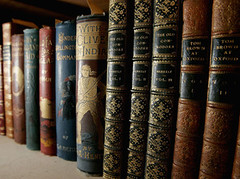 Perhaps the biggest collection of words ever assembled has just gone online: 500 billion of them, from 5 million books published over the past four centuries.
Perhaps the biggest collection of words ever assembled has just gone online: 500 billion of them, from 5 million books published over the past four centuries.
The words make up a searchable database that researchers at Harvard say is a new and powerful tool to study cultural change.
The words are a product of Google's book-scanning project. The company has converted approximately 15 million books so far into electronic documents. That's about 15 percent of all books ever published. It includes books published in English, Spanish, French, German, Chinese, Russian and Hebrew.
Many of these books are covered by copyright, and publishers aren't letting people read them online. But the new database gets around that problem: It's just a collection of words and phrases, stripped of all context except the date in which they appeared.
Yet Erez Lieberman Aiden, a mathematician and bioengineer at Harvard and co-creator of this new database, says it opens the door to a whole new style of literary scholarship.
"Instead of saying, 'What insight can I glean if I have one short text in front of me?' — it's, 'What insight can I glean if I have 500 billion words in front of me; if I have such a large collection of texts that you could never read it in a thousand lifetimes?' "
You can, for instance, type in a word or a short phrase, and the database produces a graph — a curve that traces how often an author used those words every year since 1800.
"And you realize that it's fantastically addictive," says Jean-Baptiste Michel, a mathematician and biologist at Harvard who created the new database together with Aiden. "You can just spend hours and hours typing in the names of people you know, places you like, or just random stuff. And so you end up discovering quite a lot of things that way."
To read the complete article, see: Scholars Elicit a 'Cultural Genome' From 5.2 Million Google-Digitized Books (chronicle.com/article/Scholars-Elicit-a-Cultural/125731/)

To read the complete article, see:
Google Book Tool Tracks Cultural Change With Words
(www.npr.org/2010/12/16/132106374/google-book
-tool-tracks-cultural-change-with-words)
QUIZ QUESTION: BANKNOTES FEATURING PARENTS AND CHILD
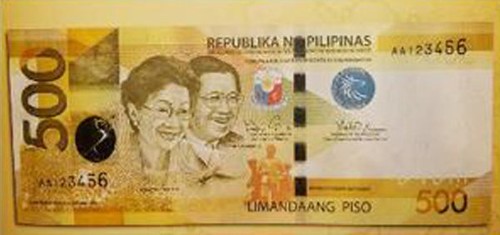
Delighted with the new P500 bill that bears the images of his late parents alongside his signature, President Benigno Aquino III could only marvel at how “unprecedented” it all was.
“The last time I checked no other banknote in the world had both parents and child on the same bill,” Mr. Aquino said Thursday at the launch of the new generation of Philippine bank notes at Malacañang.
The new P500 bill had the smiling faces of his mother, President Corazon C. Aquino, and father, the martyred Sen. Benigno “Ninoy” Aquino Jr. to the left of his signature as President.
Bangko Sentral ng Pilipinas (BSP) Governor Amando Tetangco said the new P500 bill “makes history for having on the same banknote both parents with their son's signature.”
To read the complete article, see:
A first: Parents, child on the same bank note
(newsinfo.inquirer.net/breakingnews/nation/view
/20101217-309434/A-first-Parents-child-on-the-same-bank-note)
GREEN [SPACE] DUCK CORPORATION WAS ORIGINALLY GREENDUCK
Dick Johnson writes:
You added "Corporation" to headline on my Green Duck article. This completely changed the meaning and is not true. "Corporation" was not in their name until 1962.
In the early years of The E-Sylum I enjoyed writing pithy tongue-in-cheek headlines for stories, and although it was fun I reluctantly stopped and strove instead to ensure that the headline (boringly) more-or-less matches the content of the story. On the web our audience goes far beyond our weekly subscriber list - we're building an archive for both present and future numismatists, researchers and ordinary knowledge-seekers. In this case, a more precise headline would be "GREEN [SPACE] DUCK CORPORATION WAS ORIGINALLY GREENDUCK", -Editor
Dick adds:
I cataloged a collection this week that had Greenduck items issued well into the 1930s. The use of the two-word version of the Greenduck name could even have occurred after World War II. Perhaps one of our more knowledgeable readers has more information of the actual date of this event. I know this datum of information is not world shaking, but this enters into the realm of "collector lore" that is such a delight for all collectors to learn.
The tiny letters of a maker's name are often quite small and difficult to read. An example of this was the 1963 first edition of the standard work on So-Called Dollars by Hibbler and Kappen. The authors included five medals made by Greenduck that fall in this category. Four of the five medals they described as made by "Greenbuck" -- mistaking the D for a B. (Where were their magnifying glasses?) These included HK 467 and 468, 656, 662 and 693. They got it right for HK 673.
The second edition, published 2008, got the Greenduck name right on all five issues.
To read the earlier E-Sylum article, see: GREEN [SPACE] DUCK WAS ORIGINALLY GREENDUCK CORPORATION (www.coinbooks.org/esylum_v13n50a16.html)
NOTES FROM E-SYLUM READERS: DECEMBER 19, 2010
Jim Duncan of New Zealand writes:
This Pummerin Bell piece of Austria, 1711-2011, is that 400 years northern hemisphere? Down here it's only 300 years, I guess that's why we live longer!
To read the earlier E-Sylum article, see: NEW COIN: AUSTRIAN PUMMERIN BELL FIVE EUROS (www.coinbooks.org/esylum_v13n50a26.html)
David Ganz (a member of the 1974 Assay Commission) writes:
Actually, Roger Burdette's book covers through the 1944 Assay Commission, which took place in February 1944 (covering year 1943). I hope Roger does add the remaining years. If he wants the records of the 1974 commission, I still have them. What a great job he did!
To read the earlier E-Sylum article, see: CORRECTION: ANNUAL ASSAY COMMISSION – UNITED STATES MINT 1800-1943 (www.coinbooks.org/esylum_v13n50a03.html)
Responding to the Slate article forwarded by Tom Fort, George Kolbe writes:
While hundred dollar bills may be utilized to further various nefarious schemes, they are essential, particularly now, for the preservation of what many consider a basic American value: THE RIGHT TO PRIVACY. Go after the bad guys but don't take away yet another vestige of freedom.
To read the earlier E-Sylum article, see: CONTINUED PROBLEMS WITH THE NEW $100 BILL (www.coinbooks.org/esylum_v13n50a20.html)
WAYNE'S NUMISMATIC DIARY: DECEMBER 19, 2010
BETTY HOMREN 1927-2009
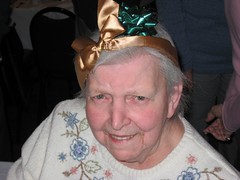 Nothing much to report numismatically this week, but I'd like to note that today would have been my mother's 83rd birthday. She encouraged my interest in coin collecting growing up and was probably the one who purchased my Whitman Lincoln Cent 1909-1959 folder. I must have been seven when I started filling the holes with coins from circulation. I was eleven when I began ordering coins and supplies from Littleton Coin Company and by around thirteen I was buying foreign coins more economically from a mail order dealer in Virginia.
Nothing much to report numismatically this week, but I'd like to note that today would have been my mother's 83rd birthday. She encouraged my interest in coin collecting growing up and was probably the one who purchased my Whitman Lincoln Cent 1909-1959 folder. I must have been seven when I started filling the holes with coins from circulation. I was eleven when I began ordering coins and supplies from Littleton Coin Company and by around thirteen I was buying foreign coins more economically from a mail order dealer in Virginia.
In college she bit her lip when I spent $200 on a proof type coin. When I sold it a couple years later for over $900 she finally admitted she'd thought I was nuts. Later when I was living in my own house she let me get away with storing perhaps thirty heavy boxes of numismatic literature in her attic. I still had some stuff there when she died last August, the night of my 51st birthday.
Above is a picture taken three years ago at the surprise birthday we threw her in Pittsburgh for her 80th birthday. She was totally surprised to see us waiting at the restaurant along with dozens of friends, neighbors and relatives. I was afraid she'd have a heart attack, but she got over the shock quickly and had a grand time - she posed for the picture with bows from her birthday presents as a hat.
God bless all the parents who encourage (and tolerate) the nuttiness of a young collector. It's one reason I give back to the hobby by running programs for kids at local coins shows. Thanks, Mom.
NUMMIS NOVA DECEMBER 2010 DINNER PHOTOS
I've uploaded to Flickr five photos I took at last week's dinner of Nummis Nova, my Northern Virginia numismatic social group. Here are a couple - see the Flickr slide show for the rest. Somehow Joe Levine managed to avoid my camera, but he was there, as were Bill and Susan Eckberg whom I neglected to list in last week's diary. Sorry! Here's proof.
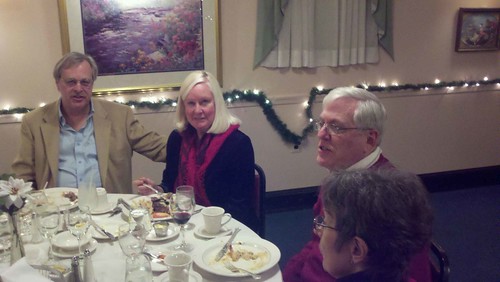
Bill and Susan Eckberg, Dave and Joannne Schenkman
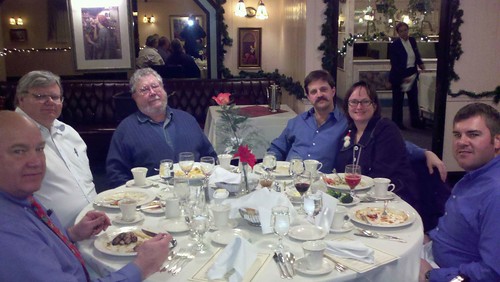
Mike Packard, Roger Burdette, Dick Doty, Wayne and Karin Herndon, Brian Cushing
To view the Flickr slide show, see: www.flickr.com/photos/coinbooks/sets/72157625614378314/show/ .
To read the earlier E-Sylum article, see: WAYNE'S NUMISMATIC DIARY: DECEMBER 12, 2010 (www.coinbooks.org/esylum_v13n50a18.html)
THE BOOK BAZARRE
PUBLIC BEGINS REACTING TO NEW SHIELD CENT DESIGN
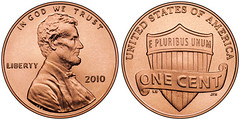

You may have noticed a small change in your small change. More likely, you haven't.
"Now when did they do that?" asked Victor Schubert, a lawyer from Racine, Wis., squinting at a freshly minted 2010 penny. "And why?"
Schubert and other tourists on the steps of the Lincoln Memorial one recent afternoon were surprised to see a brand-new look to that most familiar of coins.
Gone from the Lincoln penny is the reproduction of the Lincoln Memorial, complete with really tiny seated Lincoln, that has been "tails" since 1959. In its place is a "Union Shield," a simple acorn of 13 stripes capped with the motto "E Pluribus Unum." On the "heads" side, the iconic profile of the 16th president by Victor David Brenner remains unchanged.
The U.S. Mint has been stamping out the new design since February; presses in Philadelphia and Denver have produced more than 3.6 billion of them. But officials said the down economy has made banks slow to request new coins. It will be years, they said, before shield pennies become as common as the tens of billions of Lincoln Memorial pennies filling sofa cracks and dresser tops across the country.
Mint spokesman Michael White said there have been few comments from the public about the new design, probably because few have spotted it.
"It's a phenomenon of notice - once you see one, they're everywhere," White said. "But you don't tend to examine your change unless you're a coin collector."
Most visitors to the Lincoln Memorial - where a huge mock-up of the old penny adorns the entrance to an exhibit hall - said they were sorry to see the memorial end its half-century run as the most common edifice in American pockets.
"This building has a lot of meaning for me," said Schubert, 73, who first came to Washington on a high school trip. Whenever he's here, he still makes time to walk up the steps to see the giant Lincoln. "I stood right by that column on the corner and looked out over this beautiful expanse and decided I wanted to become a lawyer. I'll miss seeing it on the penny."
Then Schubert paused to consider the scale of the change, literally. "Not that I look at pennies very much anyway," he said.
Janey Hockenhull, chaperoning a group of fifth-graders from Fort Lauderdale, Fla., said she doesn't like to see perfectly good coins get the flip, as it were.
"If something doesn't need changing, don't change it," she said. "What was wrong with the old penny?"
Nothing, Mint officials said, but that didn't stop Congress from demanding a new one, as it has about every 50 years since the Lincoln penny was introduced in 1909 to mark the centennial of the great man's birth. Just as that first design, with ears of wheat framing the reverse side, gave way to the Lincoln Memorial penny in 1959, lawmakers directed the Mint to update the coin again this year. (For Lincoln's actual bicentennial year, 2009, the Mint released four commemorative pennies depicting different phases of his life.)
"It really hasn't made much of a ripple this time except in coin circles," said Douglas Mudd, curator of the American Numismatic Association's Money Museum in Colorado Springs. "I think it was a bigger deal when the wheat penny went away. Some people got very worked up about that one."
Part of the reason the new penny has dropped without much reaction may be a general new-coin fatigue, Mudd said. After decades when almost nothing on U.S. coins changed except the year they were minted, the past 10 years have seen almost every coin get a makeover.
Gary Marks, chairman of the Citizens Coinage Advisory Committee, a congressionally appointed body, pushed for the Union Shield, which he said was quite popular during the Civil War, appearing on frescoes in the Capitol and carved into a lot of public marble around town.
"It was on beer mugs, furniture," Marks said. "For Americans of the time, the Union Shield was broadly seen as a symbol of national unity."
Mark's commission selected the shield design from among several proposals, and the Treasury adopted it. You can find the minuscule initials of designer Lyndall Bass and engraver Joseph Menna flanking the shield.
Marks, who has a day job as the city administrator of Ketchum, Idaho, prefers more abstract symbols.
"A building is a building," he said. "It's a cherished memorial, certainly, but on a coin, I think we're better served reaching for those iconic, artistic images that communicate our national values. To me, the Union Shield does that."
To read the complete article, see:
The Mint coins a new phase: After 50 years, Lincoln Memorial gone from the penny
(www.washingtonpost.com/wp-dyn/content/article
/2010/12/14/AR2010121403144.html)
NATIONAL PUBLIC RADIO ON THE UNION SHIELD CENT
Earlier this year, a new penny hit cash registers across America. Abraham Lincoln is still there. But on the reverse side, where were accustomed to seeing the Lincoln Memorial, there is now a shield. When I saw one, for a moment I thought that the Amateur Athletic Union or the Union Pacific Railroad had suddenly minted a coin. But it's actually a Civil War shield.
And joining us now to talk about the new penny is Robert Wilson Hoge, who is curator of North American Coins and Currency for American Numismatic Society. Welcome to the program.
Mr. ROBERT WILSON HOGE (Curator, North American Coins and Currency, American Numismatic Society): Thank you. Thank you, Robert.
SIEGEL: And first, what is that shield and what do you think of it?
Mr. HOGE: Well, it's actually technically called the Shield of Union, only it is the Union of States of the United States of America. And it's a very old, traditional symbol, which has appeared on some of our coins and also on many tokens and medals in the past.
SIEGEL: Now, but what do you think about this new design? This shield, it's actually a rather large image for the reverse side of the coin and not much detail there.
Mr. HOGE: Well, that's right. And in comparison with the rather detailed and fine workmanship on something like the Lincoln Memorial or even on the old traditional wheat-ears reverse coins that were found on Lincoln cents earlier, it's a kind of thing that is probably a little bit easier to keep in adjustment and not as much work to produce the dyes for this.
SIEGEL: Why do we need a one-cent piece, I'll oblige you, at all? That is, these things, these coins possess so little value that stores let you take one or leave one. We mint millions of them every year. I gather the vast majority of coins in circulation are pennies, and the government has to buy a lot of zinc to make them. Why bother?
Mr. HOGE: I don't really have a good answer because these are being produced at taxpayer expense. It's costing more to make the cent than it's really worth in terms of its buying power.
SIEGEL: It's 1.7 cents to make a penny, I gather.
Mr. HOGE: Isn't that weird? It's like a government subsidy for mining and manufacturing interests, I guess. (Unintelligible) government subsidies.
To read the complete article (or listen to the interview), see:
Flip Side Of New Penny Features Union Shield
(www.npr.org/2010/12/16/132115537/Flip-Side-Of-
New-Penny-Features-Union-Shield)
HISTORICAL SOCIETY CONSERVES FRACTIONAL CURRENCY SHIELD
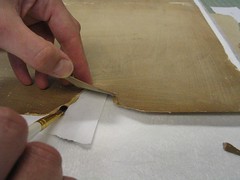 This collection of Civil War currency had been in storage for years and was covered in grime and dirt. The conservation staff at the Historical Society of Pennsylvania (HSP) spent hours carefully cleaning, unfolding, and flattening the document. The photos at right show our staff hard at work.
This collection of Civil War currency had been in storage for years and was covered in grime and dirt. The conservation staff at the Historical Society of Pennsylvania (HSP) spent hours carefully cleaning, unfolding, and flattening the document. The photos at right show our staff hard at work.
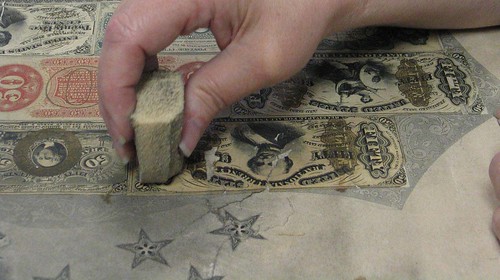
Today this currency collection--in the shape of a shield--is clean, mended, and flat (see photo below). Writing, which had been hidden by a linen backing, was discovered on its reverse. Thanks to the efforts of our conservation staff, we now know even more about this object, and it is available to any HSP visitor interested in learning more about the Civil War.
This work is possible only through the generous support of friends like you! So far during our December fundraising drive, HSP has raised over $7,000 to protect our historic documents. Will you help us reach our goal of $10,000 before December 30?
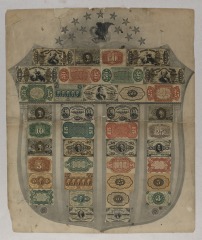
To read the complete article, see: Dirty and Grimy No More! -Civil War currency
Fractional currency shields are made up of thirty nine specimens that are glued to a cardboard back. A total of twenty fronts and nineteen backs make up a shield. These shields were made between June, 1866 and May, 1869. There are three type of shields and they are determined by the color of their background (grey, pink and green).
Most of the shields in existence show water damage. They were stored in the treasury and were damaged during a flood. The population of the shields are as follows: 200-400 grey shields, 20-25 pink shields and 10-14 green shields. Only the pink and green shields have the Grant/Sherman specimens with Colby and Spinner hand signed signatures.
These shields were produced to stem counterfeiting. The government wanted to place them in banks and post offices so that a person could compare their notes with the notes on the shields to see if their notes were counterfeit. This idea never became popular since these institutions didn't want to buy the shields.
For more information on Fractional Currency Shields, see: FRACTIONAL CURRENCY SHIELDS (uns0uled.com/shield.html)
JANUARY 8, 2011 NEW YORK AUCTION SALE
RARE AND IMPORTANT NUMISMATIC WORKS
LIVE INTERNET BIDDING
Direct Link to the Catalogue, With Over 100 Illustrations:
http://www.the-saleroom.com/Catalogues/SaleDetails.aspx?eventId=2805710
Illustrated Catalogue Available at Our Web Site: www.numislit.com
Printed Catalogues: $25.00
141 W JOHNSTOWN ROAD, GAHANNA OH 43230-2700
(614) 414-0855 • df@numislit.com • GFK@numislit.com
BERLIN AND VIENNA MUSEUMS FEATURE GOLD EXHIBITS
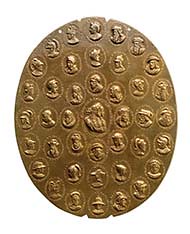
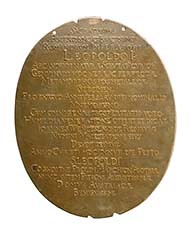
Highlight of the Coin Cabinet at the Kunsthistorisches Museum Wien: The alchemical medallion weighing more than 7 kilo! Photo: Coin Cabinet / Kunsthistorisches Museum Wien.
The Numismatic Collection of the National Museums in Berlin and the Kunsthistorisches Museum in Vienna have used the exploding gold price and the run on gold as an occasion to organize a joint exhibition. Since March 13, 2011, the exhibition rooms of Berlin's coin cabinet are showcasing extraordinarily large and heavy gold coinage from antiquity to present times alongside exquisite gold coins and medals. The range of the “Golden Giants” goes from Roman gold medals of the 3rd century to Portugaleser medals and multiple ducats of modern times, including present-day bullion coins. Many of the exhibits from the Vienna Coin Cabinet are being shown for the first time outside their premises. In addition, the exhibition includes prominent items on loan from the Austrian National Bank and many other international collections.
Special highlights of the exhibition are the largest and heaviest gold coins of the world: Austrian “Big Phil” (Vienna Philharmonic 2004) made of 1,000 ounces of fine gold (31.103 kilos in gold) and the “one-million coin” from Canada, minted with 100 kg of gold in 2007 and sold off in an auction this year for over 3.2 million euro. You will hardly find an opportunity to admire so much gold in one place! For additional information, please view www.smb.museum.de.
To read the complete article, see: Gold Rush at the Bode Museum (www.coinsweekly.com/en/News/4?&id=361)
DAILY MAIL REPORTS 2011 50 PENCE COIN FOUND IN CIRCULATION
Philip Mernick writes:
Hare's an interesting (but incorrect) news story about 2011 dated coins. The follow up comments further down the page are also entertaining.
The Royal Mint offers all 29 versions of the Olympic 50p coin in folders for a "special price" of 85 pounds (very special when they have a face value of 14.5 pounds!). I believe eight have, so far, been released into general circulation. I only have one but somebody I know has had all eight from his local supermarket.
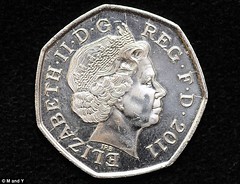 It's a find that could earn a student a mint - a 50 pence piece with next year's date on.
It's a find that could earn a student a mint - a 50 pence piece with next year's date on.
Sarah Legg was handed the coin in her change after paying for lunch at her college and noticed an unusual design.
The silver coin features one of 29 designs by members of the public created for the Royal Mint ahead of the 2012 Olympics.
Now the 17-year-old forensic science student hopes to sell it to coin collectors to help pay her university fees after she leaves Fareham College in Hampshire.
However, the Royal Mint today said the coins have slowly been released into circulation since October so people should expect to start finding them in their change now - and their value is only 50 pence.
'I thought I had gone into the future with the markings it had. Where the date it is made was it said 2011.
'I was a bit shocked to be honest and showed all my friends. It looks like the Royal Mint have made a blunder.'
Coin experts are perplexed by the find.
Rob Davies, of Portsmouth, Hampshire, said: 'It is very unusual and special and the young girl should keep it.
'I could not put a price on how much they cost but it is very special and similar to the 20 pence issue a few months ago.'
Royal Mint spokesman Nick Scargill, said: 'It is unusual but they are perfectly legal tender. It is very special.'
To read the complete article, see:
New Year comes early as student discovers 50 pence piece dated 2011 in her change
(www.dailymail.co.uk/news/article-1339063/Student
-Sarah-Legg-given-rare-50p-piece-dated-2011-change.html)
ELIZABETH CROSS MEDAL AWARDED
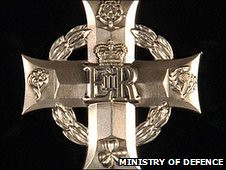 The Elizabeth Cross, which honours the relatives of servicemen and women who have died in conflict, has been awarded to 10 families in Norfolk.
The Elizabeth Cross, which honours the relatives of servicemen and women who have died in conflict, has been awarded to 10 families in Norfolk.
They received their medals at a ceremony in Norwich, attended by a former head of the British army, on 13 December 2010.
"The upsurge in support for the armed forces has been quite fantastic," said General Sir Richard Dannatt.
The ceremony was attended by around 50 people at the city's Great Hospital.
Named after the Queen, the Elizabeth Cross was unveiled by the Ministry of Defence in 2009.
The new medal is granted to the armed forces' next of kin to mark their loss, unlike the George and Victoria crosses that are specifically aimed at servicemen and women.
Each family who attended the ceremony received the sterling silver emblem, plus a memorial scroll signed by the Queen and bearing the name of the person who died.
To read the complete article, see:
Elizabeth Cross awarded to 10 Norfolk families
(news.bbc.co.uk/local/norfolk/hi/people_
and_places/newsid_9286000/9286270.stm)
FEATURED WEB SITE: THE TOKEN AND MEDAL SOCIETY
This week's Featured Web Site is suggested by Bill Hyder, who writes:
I want to pass along news that the Token and Medal Society web site (www.tokenandmedal.org) is slowly coming back to life. One of my first projects has been to create an index for the TAMS Journal in an attempt to make 50 years of publications accessible to researchers. At present, contents and indexes for volumes 31 through 50 are online.
A search function for the TAMS Maverick database is being tested and will be released in the next few months. While there is still a lot of work to do, new content is being added every few weeks to benefit the members of TAMS and the hobby in general.
Comments, contributions, and suggestions for additional content can be sent to the TAMS Webmaster, Bill Hyder (bsktmkr@pacbell.net).
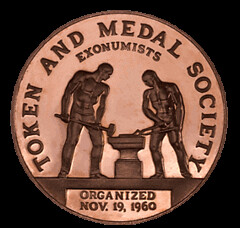
The Token and Medal Society, Inc. is an educational and non-profit organization devoted to furthering the exonumia field consisting of all forms of tokens, medals, badges and other items of a related nature. The aims of TAMS are:
- To promote and stimulate the study of tokens and medals
- To cultivate fraternal collector relations
- To encourage research and articles and recordings pertaining thereto
- To disperse information and knowledge in a society's journal
- To advance interest and prestige
- To promote meetings at conventions
- To promote and encourage distinct classifications at exhibits
- To endeavor to determine values of rarities
- To permanently record historical information relating to tokens and medals by publishing original works by members, and by reprinting old works not readily available to present day collectors.
www.tokenandmedal.org
